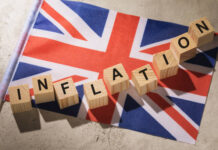Markets
Curve inversion/outperformance of the long end was the name of the game on core bond markets yesterday. US yields ceded between 1.4 bps (2-y) and 11 bps (30-y). The US 10-y yield closed near the key 4.50% reference. German yields showed a similar picture. The 2-y still gained 3.1 bps but the 30-y declined 8.1 bps. The German 10-y yield at 2.62% also closed below the 2.68% neckline, suggesting more downside might be on the cards short-term. The rise of short-term EMU yields was at least partially explained by the ECB consumer expectations survey. EMU consumers in September expected a sharp rise for the year ahead inflation at 4.0% vs 3.5% in August. If this trend persists, it gives the ECB little room to mitigate its anti-inflation campaign. At the same time, consumers turned more negative on the economy and on the labour market over the next 12 months. Uncertainty on (global) growth probably is a driver for recent rebound in bonds with long maturities. ECB speakers (Lane, Nagel, Vujcic, Makhlouf) yesterday at least kept the focus on inflation rather than on growth and indicated that it’s too early to start the debate on (potential) easing. The oil price continued its downtrend, which also might have supported momentum in bonds with longer maturities. Brent oil even closed below $80 p/b. On other markets, European equities enjoyed a constructive momentum. The EuroStoxx 50 gained 0.6% (and off the intraday peak levels). US indices showed no clear trend ending little changed. On FX markets, the dollar gave up early gains. DXY closed little changed at 105.6. After testing the 1.066 area, EUR/USD at 1.071 even closed with a small gain. USD/JPY still was the exception to the rule with the closing just below the 151 big figure. EUR/GBP regained the 0.87 barrier as markets ponder recent comments from the likes of BoE chief economist Pill on the timing of a potential BoE rate cut mid next year.
Asian equities indices mostly trade in positive territory this morning. China underperforms. China CPI (-0.2% Y/Y) and PPI (-2.6% Y/Y) moved (further) into deflation territory, suggesting a mediocre growth momentum. US Treasuries are trading little changed and so does the dollar (DXY 105.55, EUR/USD 1.071). Later today, weekly US jobless claims are interesting and might give some guidance for the intraday momentum on bond markets but evidently is no game changer. Central bank speak will again dominate market headlines, with plenty of ECB and Fed governors giving their view, including ECB Chair Lagarde and Fed Chair Powell. ECB speakers recently mostly pushed back against bets that tightening is done and we don’t expect that to change anytime soon. Fed Powell will speak at an IMF conference debating monetary policy challenges in the global economy. Markets will look out for his assessment on financial conditions after recent market repositioning. A wait-and-see attitude in current environment might extend the bond market rebound and be a tentative negative for the dollar. The US Treasury also will sell $24 bln 30-y bonds.
News & Views
Data from the US Department of Agriculture showed average prices of beef sold in US shops and supermarkets rising to nearly $8 per pound, a record high. Live cattle prices trade near $1.8 per pound at the Chicago Mercantile Exchange, also near highs ($1.87). Years of low rainfall and rising costs for hay and other feeds used for fattening in absence of grass pushed farmers to reduce their cattle stocks. Arabica coffee prices rose to their highest level since June (topping $1.7 per pound) despite good crops in top exporter Brazil. As stronger Brazilian real and port congestion (delay shipments) might be at play. Soy bean prices rose to their highest level since mid-September ($13.85 a bushel) on the back of strong Chinese demand and on fears that dry weather in the northwest of Brazil could reduce production over there.
Minutes of the previous Bank of Canada policy meeting showed that policy makers were split on the need of an additional rate hike following their October pause at 5%. They are keeping the door open as the transmission from higher rates to weaker growth and lower inflation is rather slow. Officials raised their expectations for inflation in the near term, saying higher oil prices, rent and housing costs and the slow normalization of corporate pricing are limiting the disinflation process. They also noted elevated inflation expectations and wage growth. Canadian money markets think we’ve seen peak rates with a first policy rate cut discounted by early H2 next year.














